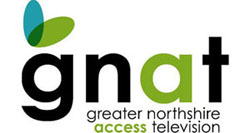Arlington mulls next steps in 3×1 merger


Andrew McKeever
GNAT-TV News Project
ARLINGTON — The Arlington school board held off making any decisions about whether to formally sign on with three other smaller towns considering a merger of districts during their board meeting Wednesday, Aug. 23, preferring to wait for more community input from a study group and a town forum likely to be held in September.
The school districts of Sandgate, Stratton and Winhall have indicated a readiness to merge into one district in a so-called three-by-one district, set up under Act 49, follow up legislation to Act 46, the landmark school consolidation statute passed in 2015. Arlington could wind up being the other district in that configuration, if voters give that course an eventual nod of approval.
The three smaller towns do not operate their own schools and their representatives anticipate meeting on Sept. 5 to hear from Daniel French, an educational consultant and former school superintendent, on the proposed articles of agreement. If they can agree on the language of those articles, the agreement will be vetted by the state Board of Education and put before the voters of those towns. All three would have to vote “yes” on the proposal for it to take effect.
French has been working with several area school districts, including the Taconic and Green Regional School District, which held a successful merger vote earlier this year.
William Bazyk, the superintendent of the Battenkill Valley Supervisory Union, which currently includes Arlington and Sandgate, attended the meeting in Manchester on Aug. 16 where the three towns voted to go forward along the three-by-one path, and shared with the Arlington school directors at their meeting Aug. 23 where that stood and the implications for the Arlington school district.
“They obviously strongly want us, and we have strong ties with Sandgate, and they were willing to push back the vote, so that gives us a substantial amount of time,” he told the directors and audience at the meeting held at Arlington Memorial High School’s library on the 23rd.
The three non-operating towns stand to reap property tax reductions on a sliding scale from eight cents, then six cents, four cents and two cents over a 4 year period if they are able to hold their vote before Nov. 30, 2017 and all towns approve of the merger. But if Arlington declines to take part in the merger, or votes against joining, the three smaller towns would not obtain those property tax savings. They could still merge into one district, and join the Bennington Rutland Supervisory Union, their likely destination, and be finished with their journey under Act 46. The legislation requires school districts to seek out merger partners and consolidate into larger entities by 2019, or state officials can assign them partners.
However, even if Arlington agrees to participate in the proposed “three-by-one” merger and all the towns eventually vote to approve it, Arlington still would not be in line to obtain comparable property tax reductions. They would however, retain their own school board, even if the Battenkill Valley Supervisory Union is dissolved and Arlington also becomes a member of the Bennington Rutland Supervisory Union. They could continue to operate their own elementary, middle and high schools. They would also not have to complete a self study required of other non-merging districts.
A study group of local residents, school directors and teachers has been forming and plans to meet next Monday, Aug. 28, to review their options, Nicol Whalen, the chairwoman of the Arlington School Board, said during Wednesday’s meeting.
“The study committee is not led by the (school) board; it’s a community-driven group,” Whalen said, adding that voter approval is required for any fundamental governance changes.
Bazyk, the superintendent, proposed holding at least one, and possibly two community forums, to give as many members of the community as possible a chance to attend.
The original school consolidation legislation, Act 46, failed to offer Arlington an obvious pathway or set of merger partners, but Act 49, with the three-by-one format, gave the school district its only possible way forward.
“However, there’s really nothing in it for us,” Whalen said, referring to the tax incentives the other towns would qualify for by Arlington would not. Even with more options to work with under Act 49, that statute “did nothing to address our specific predicament,” she added, presumably a reference to the fact their are no other likely merger partners for Arlington in the immediate geographic vicinity, and that they could be assigned with other partners with which they could be less compatible with than with Sandgate, Stratton and Winhall in the proposed three-by-one district.
When the community forums are held, Bazyk plans to review the legislation going back to Act 68, the education finance law passed in 2003, Act 153, passed in 2010, the state’s prior effort to nudge school districts into consolidations by authorizing Regional Education Districts, or REDs and up through Acts 46 and 49. The three-by-one merger is a type of RED.
Regardless of what options are chosen, Bazyk warned that one way or another, the Arlington School District, and the Battenkill Valley Supervisory Union would look different not too far down the road.
“By 2019 we’ll be a different SU (supervisory union) …we control our destiny for a few more months but it’s coming close,” he said.





